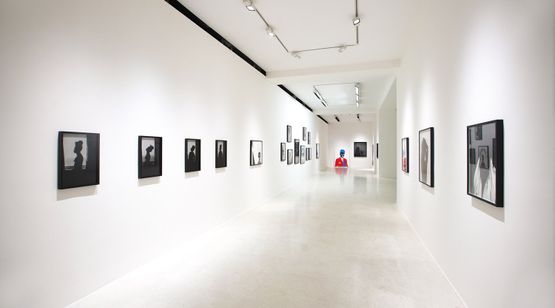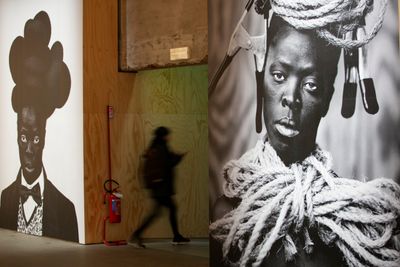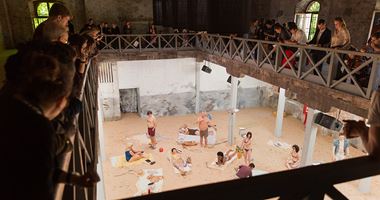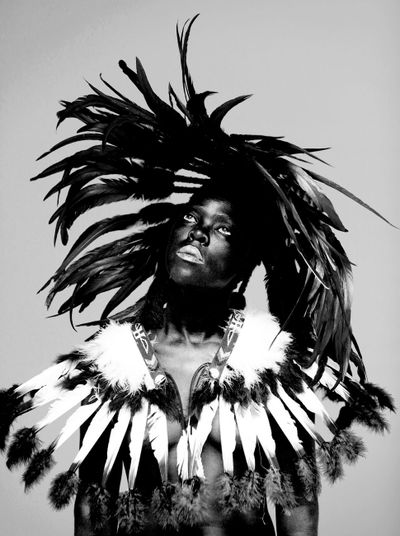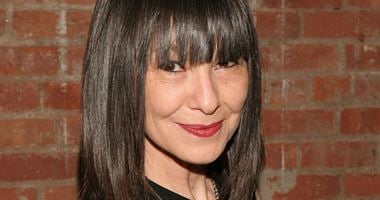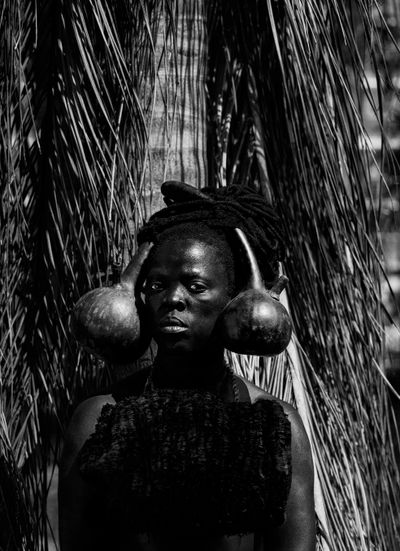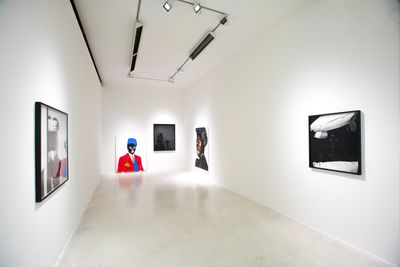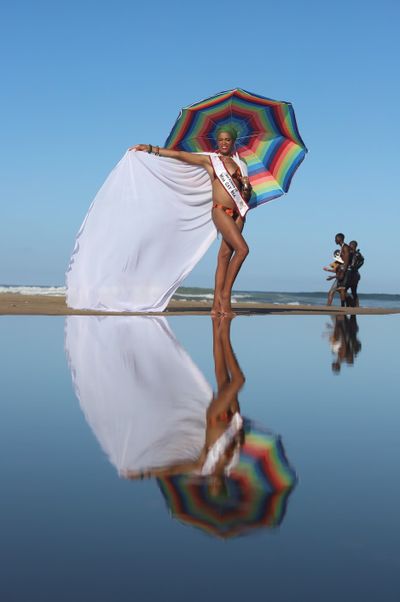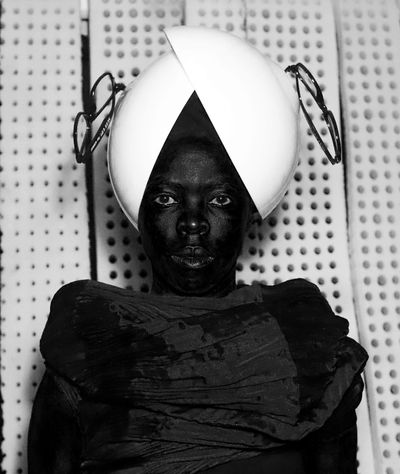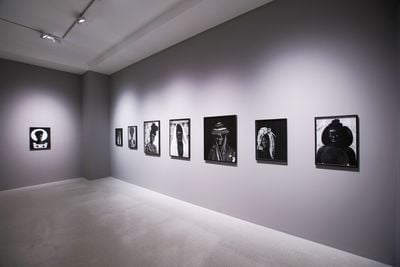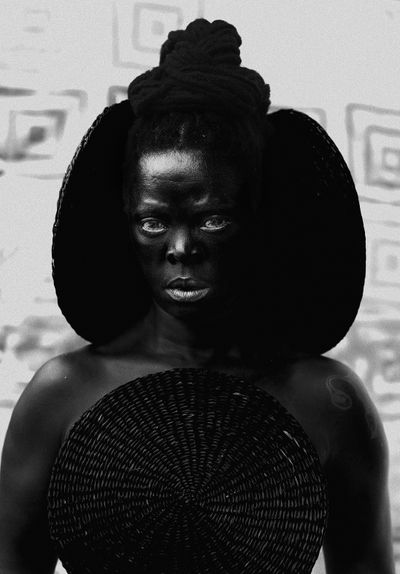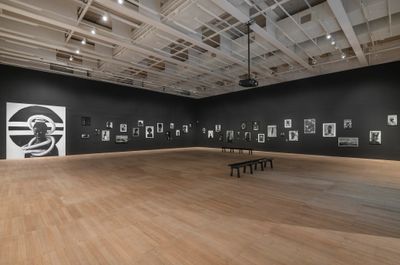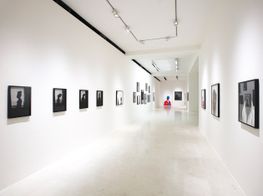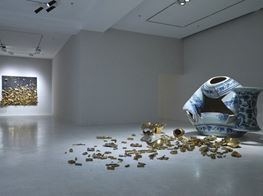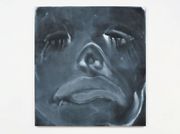Zanele Muholi Stakes Their Claim
Zanele Muholi, Mihla, Port Edward (2020). Gelatin silver print in frame. Edition of 7. 70 x 70 cm. Courtesy the artist.
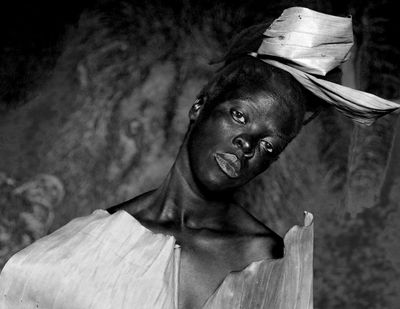
Zanele Muholi, Mihla, Port Edward (2020). Gelatin silver print in frame. Edition of 7. 70 x 70 cm. Courtesy the artist.
The opening of Zanele Muholi's exhibition Somnyama Ngonyama, Hail the Dark Lioness at Pearl Lam Galleries in Hong Kong (18 May–15 August 2021) coincided with the end of the artist's first major U.K. survey at Tate Modern (5 November 2020–31 May 2021).
Presented in collaboration with Muholi Arts Project, Somnyama Ngonyama features over 50 self-portraits, among them paintings, of the South African visual activist and photographer: mostly distinctive black and white images that present the artist adorned in props reflecting their everyday surroundings, their gaze at once serious and confrontational.
Aside from these self-portraits, which recently featured in the 2019 Venice Biennale, Muholi is internationally recognised for photographic portraits of South African sexual minorities, and activism exposing hate crimes and punitive rapes fuelled by transphobia, homophobia, and gender-based violence.
Defiant black and white portraits characterise the ongoing 'Faces and Phases' (2006–ongoing) series, which documents Black South African lesbians, transgender individuals, and gender non-conforming and non-binary people.
My first real-life encounter with the artist's awe-inspiring, community-driven, and radical practice occurred at Performa 17 in New York (1–19 November 2017).
Framed under South African Pavilion Without Walls, one of three themes outlined by Performa founder RoseLee Goldberg and curator Adrienne Edwards, I found Muholi and their team of 23 performers, dancers, singers, poets, and activists at a late night event of music and dancing at Public Arts, the basement venue of PUBLIC Hotel,which hosted Performa AFTERHOURS.
Muholi's New York happening was part of Masihambisane – On Visual Activism, a series of events that took place across the city as part of Performa to highlight the needs, wellbeing, and ultimate survival of LGBTQIA+ individuals in South Africa who constantly face oppression and death.
Portraits from 'Faces and Places' were shown in various public settings, including a Times Square billboard, digital screens at six subway stations, and the City Point commercial complex in Brooklyn.
But while Muholi's critical work extends to wider practices of erasure, their work isn't just about invisibility; it is also deeply rooted in belonging and community. Alongside their artistic practice, Muholi is engaged in initiatives that support marginalised communities, having co-founded the Forum for the Empowerment of Women and Inkanyiso, which supports queer and visual activist media.
In the conversation that follows, Muholi talks about a life of activism, staking a claim for existence, and the importance of forging ongoing safe spaces for communality as part of their over two-decades long practice.
JDI've always been struck by the community and worldbuilding that is at core of what you do. I was moved by the project you did at Performa 17, and continue to be inspired by the ethos of love, resistance, and solidarity of all who were present in it. Can you expand on what visual activism in everyday life means to you?
ZMVisual activism in everyday life means two things to me. It means finding ways to visibly occupy spaces that once made us invisible, and it also entails creating visuals that intervene against oppression.
The political agenda behind my work is not yet fulfilled. Whether I'm working in photography or in painting, history and politics are present, so I have to continue to redirect, resist, and interrogate the act of looking.
As a daily, lived practice, visual activism is using your presence to challenge the status quo and rewrite exclusionary historical narratives, as well as produce visual artefacts that will continue to do this work and challenge racist archives after we're gone.
JDWhat strategies help connect the work you do with a younger Black LGBTQIA+ generation coming up in South Africa, through initiatives including the Forum for the Empowerment of Women, Inkanyiso, and keeping collective members motivated in a world where one does not stop fighting?
I'm thinking here of how to rest, pause, and care for others and oneself, whilst creating spaces where this happens and that offer both respite and resistance.
ZMIn terms of connecting with a younger generation, I try to ensure my work doesn't stop being accessible to people, regardless of age or education. I'm active on social media in ways that include humour and openness.
Our foundation produced a colouring book of Somnyama Ngonyama that allows children to engage with the material in a playful way. Most recently, I've provided workshops in photography and painting to the children and young adults in my area aged 3 to 21 and 21 to 34, and in these sessions, we dance and have fun while we work.
As a result of apartheid, people are categorised as youths until they turn 35, which can stunt development. My activism now focuses on education and building arts infrastructure in places that are rural or still considered peripheral.
We're essentially building a school and working to instil the importance of arts education in our underprivileged communities. This matters so much to me because the poor education I received under apartheid has taken a lifetime to break through, and I'd like for the current and coming generations to know that more is possible.
Regarding keeping collective members motivated, we're all activists, so even if what we do is difficult and we're traumatised or demotivated by the things we see in the headlines, we are each other's support systems and we try to keep each other going.
JDIn your role as an artist and activist who uses a camera to bear witness to pain, love, and defiance within the Black LGBTQIA+ community in South Africa with serial works such as 'Faces and Phases' that began over a decade ago in 2006, how do you constantly redirect the gaze towards the self and others in your work in terms of themes and thinking through what to capture?
ZMAs you say, my work is about bearing witness to the spectrum of humanity within the Black LGBTQIA+ community, so as an activist I feel my task is to continue to do this, even when fatigue sets in.
The political agenda behind my work is not yet fulfilled. Whether I'm working in photography or in painting, history and politics are present, so I have to continue to redirect, resist, and interrogate the act of looking.
JDWhat are the ways you've stayed grounded within an art world that often hijacks artist and collective-led activism for all sorts of agendas, particularly when working with institutions and galleries?
ZMMy work is about collectivity. It is intimately tied into the thinking of others, so it's not possible to lose the connection to my community and see myself as a sole creator.
Even when my face and body are in the frame, I take on archetypes to speak to broader histories and experiences. Without this grounding, the work would not exist.
JD'Somnyama Ngonyama' (2012–ongoing) sees you subvert the gaze to reclaim your Blackness. Could you expand on the importance of presenting this body of work as a network of multiple gazes and actively looking back to stake a claim and challenge constructions of and projections on the Black body?
ZMAs said, the gaze is political. It is intimately connected to power, its movement, and its consequences. The lines between who gets to look and who is looked at is the same line between imperialism and dispossession.
To see myself in this way and reclaim authority is an action that heals me and visually tells others that look like me that they have the right to see and heal themselves.
Thus, 'Somnyama Ngonyama' actively takes on gazes and the projections they cause, as well as the constructions they bring to mind, because this is how we unseat biases. Discrimination begins with the eye and the conclusions are drawn from looking.
To see myself in this way and reclaim authority is an action that heals me and visually tells others that look like me that they have the right to see and heal themselves.
JDCould you expand a bit on your relationship to the practice of Renee Cox? When did you first encounter her, and in what ways does her practice resonate with yours, in terms of using one's own body to celebrate Black womanhood and criticise a racist and sexist society?
ZMRenee Cox is one of the most important creators and thinkers in our art world. She has contributed a lot to the political discussion around bodies.
My wish is that South African practitioners who have been as committed could be as recognised globally. People like Sindiwe Magona, Berni Searle, and Tracey Rose have been loud and prolific before the discourse became mainstream, as well as the younger cohort with Gabi Ngcobo and Zethu Matebeni.
JDWhat does beauty mean to you both as subversion and expression?
ZMI think we have to be careful and deliberate when we talk about beauty, because the very idea has been steeped in Eurocentrism and weaponised against people who don't fall into this framework, casting them as exotic or bestial depending on the gaze.
The current standard of beauty is something to be subverted. We need to make space for different kinds of beauty, since all beings and all things have the ability to spark a connection and be powerful and moving, which is what I think beauty really is. —[O]


